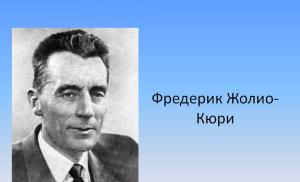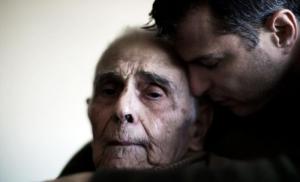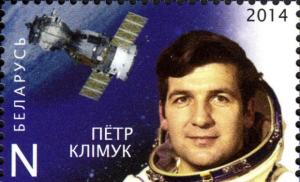Genetic relationship A genetic series is a chain that unites substances of different classes, which are compounds of one element and are interconverted. Genetic relationship between the main classes of inorganic substances
9 cl. Lesson number 47 Topic: "Genetic relationship of Me, NeMe and their compounds."
Goals and objectives of the lesson:
Get acquainted with the concept of "genetic link".
Learn to compose the genetic series of metals and non-metals.
Based on the knowledge of students about the main classes of inorganic substances, bring them to the concept of "genetic connection" and the genetic series of metal and non-metal;
To consolidate knowledge about the nomenclature and properties of substances belonging to different classes;
Develop the ability to highlight the main thing, compare and generalize; identify and establish relationships;
To develop ideas about the cause-and-effect relationships of phenomena.
To restore in memory the concepts of a simple and complex substance, of metals and non-metals, of the main classes of inorganic compounds;
To form knowledge about the genetic relationship and the genetic series, to learn how to make up the genetic series of metals and non-metals.
Develop the ability to generalize facts, build analogies and draw conclusions;
Continue the development of a culture of communication, the ability to express their views and judgments.
Foster a sense of responsibility for the knowledge gained.
Planned results:
Know definitions and classification of inorganic substances.
Be able to classify inorganic substances by composition and properties; make up the genetic series of metal and non-metal;
illustrate the equations of chemical reactions of the genetic relationship between the main classes of inorganic compounds.
Competencies:
Cognitive skills : to organize and classify information from written and oral sources.
Activity skills : to reflect on their activities, to act according to the algorithm, to be able to compose the algorithm of new activities, amenable to algorithmization; understand the language of schemes.
Communication skills : build communication with other people - conduct a dialogue in a pair, take into account the similarities and differences in positions, interact with partners to obtain a common product and result.
Lesson type:
for a didactic goal: a lesson in the actualization of knowledge;
by the way of organization: generalizing with the assimilation of new knowledge (combined lesson).
During the classes
I. Organizational moment.
II. Updating basic knowledge and ways of students' actions.
Lesson motto:"The only way,
leading to knowledge is activity ”(B. Shaw). slide 1
At the first stage of the lesson, I update the basic knowledge that is necessary to solve the problem. This prepares the students to perceive the problem. The work is carried out in an entertaining way. I conduct a "brainstorming" on the topic: "The main classes of inorganic compounds" Work on cards
Task 1. "Third extra" slide 2
Students were given cards on which three formulas are written, and one of them is superfluous
Students identify the redundant formula and explain why it is redundant.
Answers: MgO, Na 2 SO 4, H 2 S slide 3
Task 2. "Name and choose us" ("Name") slide 4
| non-metals | hydroxides | Anoxic acids |
Give a name to the selected substance ("4-5" write down the answers with the formulas, "3" words).
(Students work in pairs, wanting at the blackboard. ("4-5" write down the answers in formulas, "3" in words).
Answers: slide 5
1.copper, magnesium;
4. phosphoric;
5.magnesium carbonate, sodium sulfate
7.salt
III. Learning new material.
1. Determination of the topic of the lesson together with the students.
As a result of chemical transformations, substances of one class are converted into substances of another: an oxide is formed from a simple substance, an acid is formed from an oxide, and a salt is formed from an acid. In other words, the classes of compounds you learned are interrelated. We will distribute the substances into classes, according to the complexity of the composition, starting with a simple substance, according to our scheme.
Students express their versions, thanks to which we draw up simple diagrams of 2 rows: metals and non-metals. Scheme of genetic series.
I draw the students' attention to the fact that each chain has something in common - these are chemical elements metal and non-metal, which pass from one substance to another (as if by inheritance).
(for strong learners) CaO, P 2 O 5, MgO, P, H 3 PO 4, Ca, Na 3 PO 4, Ca (OH) 2, NaOH, CaCO 3, H 2 SO 4
(For weak learners) CaO, CO 2, C, H 2 CO 3, Ca, Ca (OH) 2, CaCO 3 slide 6
Answers: slide 7
Р Р2O5 H3РO4 Na3 РO4
Ca CaO Ca (OH) 2 CaCO3
What is the name of the carrier of hereditary information in biology? (Gene).
What element do you think will be the “genome” for each strand? (metal and non-metal).
Therefore, such chains or rows are called genetic. The topic of our lesson is "Genetic relationship between Me and Not Me" slide 8... Open a notebook and write down the number and topic of the lesson. What do you think are the goals of our lesson? To get acquainted with the concept of "genetic connection". Learn to compose the genetic series of metals and non-metals.
2.Let's give a definition of a genetic link.
Genetic link - is called the connection between substances of different classes, based on their interconversions and reflecting the unity of their origin. Slide 9.10
Signs that characterize the genetic line: slide 11
1. Substances of different classes;
2. Different substances formed by one chemical element, i.e. represent different forms of the existence of one element;
3. Different substances of one chemical element are interconverted.
3. Consider examples of the genetic relationship of Me.
2. Genetic series, where an insoluble base acts as a base, then the series can be represented as a chain of transformations: slide 12
metal → basic oxide → salt → insoluble base → basic oxide → metal
For example, Cu → CuO → CuCl2 → Cu (OH) 2 → CuO
1.2 Cu + O 2 → 2 CuO 2.CuO + 2HCI → CuCI 2 3.CuCI 2 + 2NaOH → Cu (OH) 2 + 2NaCI
4.Cu (OH) 2 CuO + H 2 O
4. Consider examples of the genetic relationship of Me.
Among non-metals, two types of series can also be distinguished: slide 13
2. Genetic series of non-metals, where soluble acid acts as a link in the series. The chain of transformations can be represented as follows: non-metal → acid oxide → soluble acid → salt For example, P → P 2 O 5 → H 3 PO 4 → Ca 3 (PO 4) 2
1.4P + 5O 2 → 2P 2 O 5 2.P 2 O 5 + H 2 O → 2H 3 PO 4 3.2H 3 PO 4 +3 Ca (OH) 2 → Ca 3 (PO 4) 2 +6 H 2 O
5. Compilation of the genetic line. Slide 14
1. Genetic series, in which alkali acts as a base. This series can be represented using the following transformations: metal → basic oxide → alkali → salt
О 2, + Н 2 О, + НCI
4K + О 2 = 2K 2 O K 2 O + Н 2 О = 2KOH KOH + НCI = KCl slide 15
2. Genetic series of non-metals, where insoluble acid acts as a link in the series:
nonmetal → acidic oxide → salt → acid → acidic oxide → nonmetal
For example, Si → SiO 2 → Na 2 SiO 3 → H 2 SiO 3 → SiO 2 → Si (make up the equations yourself, who works "4-5"). Self-test. All equations are correct "5", one error is "4", two errors are "3".
5. Performing exercises dif-no (self-test). Slide 15
Si + O 2 = SiO 2 SiO 2 + 2NaOH = Na 2 SiO 3 + H 2 O Na 2 SiO 3 + 2HCI = H 2 SiO 3 + 2NaCI H 2 SiO 3 = SiO 2 + H 2 O
SiO 2 + 2Mg = Si + 2MgO
1. Make the transformation according to the scheme. (Task "4-5")
Task 1. In the figure, connect the formulas of substances in accordance with their location in the genetic series of aluminum. Draw up the reaction equations. Slide 16
Self-test.
4AI + 3O 2 = 2AI 2 O 3 AI 2 O 3 + 6HCI = 2AICI 3 + 3H 2 O AICI 3 + 3NaOH = AI (OH) 3 + 3NaCI
AI (OH) 3 = AI 2 O 3 + H 2 O slide 17
Task 2. “Hit the target”. Select the formulas of substances that make up the genetic line of calcium. Make up the reaction equations for these transformations. Slide 18

Self-test.
2Ca + О 2 = 2CaO CaO + Н 2 О = Ca (OH) 2 Ca (OH) 2 + 2 НCI = CaCI 2 + 2 Н 2 О CaCI 2 + 2AgNO 3 = Ca (NO 3) 2 + 2AgCI slide 19
2. To carry out the task according to the scheme. Make up the reaction equations for these transformations.
О 2 + Н 2 О + NaOH
S SO 2 H 2 SO 3 Na 2 SO 3 or light version
S + O 2 = SO 2 + H 2 O = H 2 SO 3 + NaOH =
SO 2 + H 2 O = H 2 SO 3
H 2 SO 3 + 2NaOH = Na 2 SO 3 + 2H 2 O
IV. AnchoringZUN
Option 1.
Part A.
1.The genetic range of a metal is: a) substances forming a series based on one metal
a)CO 2 b) CO c) CaO d) O 2
3. Determine the substance "Y" from the transformation scheme: Na → Y → NaOH a)Na 2 O b) Na 2 O 2 c) H 2 O d) Na
4.In the transformation scheme: CuCl 2 → A → B → Cu, the formulas of intermediate products A and B are: a) CuO and Cu (OH) 2 b) CuSO 4 and Cu (OH) 2 c) CuCO 3 and Cu (OH) 2 G)Cu(OH) 2 andCuO
5. The final product in the chain of transformations based on carbon compounds CO 2 → X 1 → X 2 → NaOH a) sodium carbonate b) sodium bicarbonate c) sodium carbide d) sodium acetate
E → E 2 O 5 → H 3 EO 4 → Na 3 EO 4 a) N b) Mn v)P d) Cl
Part B.
Fe + Cl 2 A) FeCl 2
Fe + HCl B) FeCl 3
FeO + HCl B) FeCl 2 + H 2
Fe 2 O 3 + HCl D) FeCl 3 + H 2
E) FeCl 2 + H 2 O
E) FeCl 3 + H 2 O
1 B, 2 A, 3D, 4E
a) potassium hydroxide (solution) b) iron c) barium nitrate (solution) d) aluminum oxide
e) carbon monoxide (II) f) sodium phosphate (solution)
Part C.
1. To carry out the scheme of transformation of substances: Fe → FeO → FeCI 2 → Fe (OH) 2 → FeSO 4
2Fe + O 2 = 2FeO FeO + 2HCI = FeCI 2 + H 2 O FeCI 2 + 2NaOH = Fe (OH) 2 + 2NaCI
Fe (OH) 2 + H 2 SO 4 = FeSO 4 +2 H 2 O
Option 2.
Part A. (tasks with one correct answer)
b) substances that form a series based on one non-metal c) substances that form a series based on a metal or non-metal d) substances from different classes of substances connected by transformations
2. Determine the substance "X" from the transformation scheme: P → X → Ca 3 (PO 4) 2 a)P 2 O 5 b) P 2 O 3 c) CaO d) O 2
a) Ca b)CaO c) CO 2 d) H 2 O
4.In the transformation scheme: MgCl 2 → A → B → Mg, the formulas of intermediate products A and B are: a) MgO and Mg (OH) 2 b) MgSO 4 and Mg (OH) 2 c) MgCO 3 and Mg (OH) 2 G)Mg(OH) 2 andMgO
CO 2 → X 1 → X 2 → NaOH a) sodium carbonate b) sodium bicarbonate
6. Element "E" participating in the chain of transformations:
Part B. (tasks with 2 or more correct answers)
1. Establish a correspondence between the formulas of the starting substances and the reaction products:
Starting material formulas Product formulas
NaOH + CO 2 A) NaOH + H 2
Na + H 2 O B) NaHCO 3
NaOH + HCl D) NaCl + H 2 O
1B, 2V, 3 A, 4G
a) sodium hydroxide (solution) b) oxygen c) sodium chloride (solution) d) calcium oxide
e) potassium permanganate (crystalline) f) sulfuric acid
Part C. (with a detailed answer)
S + O 2 = SO 2 2SO 2 + O 2 = 2 SO 3 SO 3 + H 2 O = H 2 SO 4 H 2 SO 4 + Ca (OH) 2 = CaSO 4 + 2 H 2 O
CaSO 4 + BaCI 2 = BaSO 4 + CaCI 2
V.Outcomeslesson. Grading.
VI.D / Z pp. 215-216 prepare for pr No. 3 Option 1 of tasks No. 2,4, 6, Option 2 of tasks No. 2,3, 6. Slide 20
Vii... Reflection.
Students write on pieces of paper what they did in the lesson and what did not. What were the difficulties. And a wish to the teacher.
The lesson is over. Thank you all and have a nice day. Slide 21
If time remains.
Task
Once, Yukh conducted experiments to measure the electrical conductivity of solutions of various salts. On his laboratory table were beakers with solutions KCl, BaCl
2
, K
2
CO
3
, Na
2
SO
4
and AgNO
3
... A label was neatly glued to each glass. There was a parrot in the laboratory whose cage was not very well locked. When Yukh, absorbed in the experiment, looked back at the suspicious rustle, he was horrified to find that the parrot, grossly violating safety rules, was trying to drink from a glass with BaCl 2 solution. Knowing that all soluble barium salts are extremely poisonous, Yukh quickly grabbed a glass with a different label from the table and forcibly poured the solution into the parrot's beak. The parrot was saved. The glass with which solution was used to save the parrot?
Answer:
BaCl 2 + Na 2 SO 4 = BaSO 4 (precipitate) + 2NaCl (barium sulfate is so slightly soluble that it cannot be poisonous, like some other barium salts).
Annex 1
9 "B" class F.I._______________________ (for weak students)
Task 1. "The third extra".
(4 correct - "5", 3- "4", 2- "3", 1- "2")
| non-metals | hydroxides | Anoxic acids |
||||
Students define the selected class and select appropriate substances from the handouts provided.
copper, silicon oxide, hydrochloric, barium hydroxide, coal, magnesium, phosphoric, barium hydroxide, magnesium oxide, iron (III) hydroxide, magnesium carbonate, sodium sulfate.
("4-5" write down the answers in formulas, "3" in words).
12 answers "5", 11-10- "4", 9-8- "3", 7 and less - "2"
Task 3.
О 2, + Н 2 О, + НCI
For example, K → K 2 O → KOH → KCl (make up the equations yourself, who works "3", one mistake "3", two mistakes "2").
Task 4. To carry out the task according to the scheme. Make up the reaction equations for these transformations.
О 2 + Н 2 О + NaOH
S SO 2 H 2 SO 3 Na 2 SO 3
or light version
H 2 SO 3 + NaOH =
Option 1.
Part A. (tasks with one correct answer)
1.The genetic series of a metal is: a) substances that form a series based on one metal
b) substances that form a series based on one non-metal c) substances that form a series based on a metal or non-metal d) substances from different classes of substances connected by transformations
2. Determine the substance "X" from the transformation scheme: C → X → CaCO 3
a) CO 2 b) CO c) CaO d) O 2
3. Determine the substance "Y" from the transformation scheme: Na → Y → NaOH a) Na 2 O b) Na 2 O 2 c) H 2 O d) Na
4.In the transformation scheme: CuCl 2 → A → B → Cu, the formulas of intermediate products A and B are: a) CuO and Cu (OH) 2 b) CuSO 4 and Cu (OH) 2 c) CuCO 3 and Cu (OH) 2 d) Cu (OH) 2 and CuO
5.The final product in the chain of transformations based on carbon compounds CO 2 → X 1 → X 2 → NaOH a) sodium carbonate b) sodium bicarbonate c) sodium carbide d) sodium acetate
6. Element "E" participating in the chain of transformations: E → E 2 O 5 → H 3 EO 4 → Na 3 EO 4 a) N b) Mn c) P d) Cl
Part B. (tasks with 2 or more correct answers)
1. Establish a correspondence between the formulas of the starting substances and the reaction products:
Starting material formulas Product formulas
Fe + Cl 2 A) FeCl 2
Fe + HCl B) FeCl 3
FeO + HCl B) FeCl 2 + H 2
Fe 2 O 3 + HCl D) FeCl 3 + H 2
E) FeCl 2 + H 2 O
E) FeCl 3 + H 2 O
2. A solution of copper (II) sulfate interacts:
a) potassium hydroxide (solution) b) iron c) barium nitrate (solution) d) aluminum oxide
e) carbon monoxide (II) f) sodium phosphate (solution)
Part C. (with a detailed answer)
1. To carry out the scheme of transformation of substances:
Fe → FeO → FeCI 2 → Fe (OH) 2 → FeSO 4
Appendix 2
9 "B" class F.I._______________________ (for a strong student)
Task 1. "The third extra". Determine the redundant formula and explain why it is redundant.
(4 correct - "5", 3- "4", 2- "3", 1- "2")
Task 2. “Name and choose us” (“Name”). Give a name to the selected substance, fill in the table.
Students define the selected class and select appropriate substances from the handouts provided.
copper, silicon oxide, hydrochloric, barium hydroxide, coal, magnesium, phosphoric, barium hydroxide, magnesium oxide, iron (III) hydroxide, magnesium carbonate, sodium sulfate. ("4-5" write down the answers in formulas, "3" in words).
12 answers "5", 11-10- "4", 9-8- "3", 7 and less - "2"
Task 3.
Si → SiO 2 → Na 2 SiO 3 → H 2 SiO 3 → SiO 2 → Si (make up the equations yourself, who works "4-5"). Self-test. All equations are correct "5", one error is "4", two errors are "3".
Task 4. In the figure, connect the formulas of substances with lines in accordance with their location in the genetic series of aluminum. Draw up the reaction equations. All equations are correct "5", one error is "4", two errors are "3".
Task 5. “Hit the target”. Select the formulas of substances that make up the genetic line of calcium. Make up the reaction equations for these transformations. All equations are correct "5", one error is "4", two errors are "3".

Option 2.
Part A. (tasks with one correct answer)
1. The genetic series of a non-metal is: a) substances that form a series based on one metal
b) substances that form a series based on one non-metal c) substances that form a series based on a metal or non-metal d) substances from different classes of substances connected by transformations
2. Determine the substance "X" from the transformation scheme: P → X → Ca 3 (PO 4) 2 a) P 2 O 5 b) P 2 O 3 c) CaO d) O 2
3. Determine the substance "Y" from the transformation scheme: Ca → Y → Ca (OH) 2
a) Ca b) CaO c) CO 2 d) H 2 O
4.In the transformation scheme: MgCl 2 → A → B → Mg, the formulas of intermediate products A and B are: a) MgO and Mg (OH) 2 b) MgSO 4 and Mg (OH) 2 c) MgCO 3 and Mg (OH) 2 d) Mg (OH) 2 and MgO
5. The final product in the chain of transformations based on carbon compounds:
CO 2 → X 1 → X 2 → NaOH a) sodium carbonate b) sodium bicarbonate
c) sodium carbide d) sodium acetate
6. Element "E" participating in the chain of transformations:
E → EO 2 → EO 3 → H 2 EO 4 → Na 2 EO 4 a) N b) S c) P d) Mg
Part B. (tasks with 2 or more correct answers)
1. Establish a correspondence between the formulas of the starting substances and the reaction products:
Starting material formulas Product formulas
NaOH + CO 2 A) NaOH + H 2
NaOH + CO 2 B) Na 2 CO 3 + H 2 O
Na + H 2 O B) NaHCO 3
NaOH + HCl D) NaCl + H 2 O
2. Hydrochloric acid does not interact:
a) sodium hydroxide (solution) b) oxygen c) sodium chloride (solution) d) calcium oxide
e) potassium permanganate (crystalline) f) sulfuric acid
Part C. (with a detailed answer)
Carry out the scheme for the transformation of substances: S → SO 2 → SO 3 → H 2 SO 4 → CaSO 4 → BaSO 4
Appendix 3
Answer sheet "4-5":
Task 1. MgO, Na 2 SO 4, H 2 S
Task 2.
1.copper, magnesium;
3. silicon oxide, magnesium oxide;
4.phosphoric,
5. magnesium carbonate, sulfate;
6. barium hydroxide, iron (III) hydroxide;
7.sodium hydrochloric acid
Task 3.
SiO 2 + 2NaOH = Na 2 SiO 3 + H 2 O
Na 2 SiO 3 + 2НCI = H 2 SiO 3 + 2NaCI
H 2 SiO 3 = SiO 2 + H 2 O
SiO 2 + 2Mg = Si + 2MgO
Task 4.
4AI + 3O 2 = 2AI 2 O 3
AI 2 O 3 + 6НCI = 2AICI 3 + 3Н 2 О
AICI 3 + 3NaOH = AI (OH) 3 + 3NaCI
AI (OH) 3 = AI 2 O 3 + H 2 O
Task 5.
CaO + H 2 O = Ca (OH) 2
Ca (OH) 2 +2 НCI = CaCI 2 + 2 Н 2 О
CaCI 2 + 2AgNO 3 = Ca (NO 3) 2 + 2AgCI
Self-assessment sheet.
| Name of the student | Job No. | |
First, we present our information on the classification of substances in the form of a diagram (Scheme 1).
Scheme 1
Classification of inorganic substances
Knowing the classes of simple substances, it is possible to compose two genetic series: the genetic series of metals and the genetic series of non-metals.
There are two types of the genetic series of metals.
1. Genetic range of metals, which corresponds to alkali as hydroxide. In general terms, such a series can be represented by the following chain of transformations:
For example, the genetic makeup of calcium:
Ca → CaO → Ca (OH) 2 → Ca 3 (PO 4) 2.
2. Genetic range of metals, which corresponds to the insoluble base. This series is richer in genetic ties, since it more fully reflects the idea of mutual transformations (direct and reverse). In general, such a series can be represented by the following chain of transformations:
metal → basic oxide → salt →
→ base → basic oxide → metal.
For example, the genetic makeup of copper:
Cu → CuO → CuCl 2 → Cu (OH) 2 → CuO → Cu.
Two varieties can also be distinguished here.
1. The genetic series of non-metals, to which a soluble acid corresponds as a hydroxide, can be reflected in the form of such a chain of transformations:
non-metal → acid oxide → acid → salt.
For example, the genetic line of phosphorus:
P → P 2 O 5 → H 3 PO 4 → Ca 3 (PO 4) 2.
2. The genetic range of non-metals, which corresponds to the insoluble acid, can be represented using the following chain of transformations:
non-metal → acid oxide → salt →
→ acid → acid oxide → non-metal.
Since of the acids we studied, only silicic acid is insoluble, as an example of the last genetic series, consider the genetic series of silicon:
Si → SiO 2 → Na 2 SiO 3 → H 2 SiO 3 → SiO 2 → Si.
Key words and phrases
- Genetic connection.
- Genetic range of metals and its varieties.
- Genetic range of non-metals and its varieties.
Work with computer
- Please refer to the electronic attachment. Study the material in the lesson and complete the suggested assignments.
- Search the Internet for e-mail addresses that can serve as additional sources for revealing the content of the keywords and phrases in the paragraph. Offer to help the teacher prepare a new lesson by reporting on the keywords and phrases in the next paragraph.
Questions and tasks
Instructions for students in the correspondence course "General chemistry for grade 12" 1. Category of students: materials of this presentation are provided to the student for independent study of the topic "Substances and their properties", from the course of general chemistry of grade 12. 2. Course content: includes 5 presentations of topics. Each study topic contains a clear structure of the training material on a specific topic, the last slide is a control test - tasks for self-control. 3. Duration of training for this course: from one week to two months (determined individually). 4. Control of knowledge: the student provides a report on the implementation of test tasks - a sheet with options for tasks, indicating the topic. 5. Evaluation of the result: "3" - 50% of tasks completed, "4" - 75%, "5"% of tasks. 6. The result of the training: passing (failing) of the studied topic.


Reaction equations: 1.2Cu + о 2 2CuO copper (II) oxide 2. CuO + 2 HCl CuCl 2 + Н 2 О copper (II) chloride 3. CuCl NaOH Cu (OH) Na Cl copper (II) hydroxide 4. Cu (OH) 2 + H 2 SO 4 CuSO 4 + 2H 2 O copper (II) sulfate



Genetic range of organic compounds. If the basis of the genetic series of inorganic chemistry are substances formed by one chemical element, then the basis of the genetic series in organic chemistry is made up of substances with the same number of carbon atoms in a molecule.

Reaction scheme: Each number above the arrow corresponds to a certain reaction equation: ethanal ethanol ethene ethane chloroethane ethin Acetic (ethanoic) acid

Reaction equations: 1. С 2 Н 5 Cl + H 2 O С 2 Н 5 OH + HCl 2. С 2 Н 5 OH + O СН 3 СН O + H 2 O 3. СН 3 СН O + H 2 С 2 Н 5 OH 4.C 2 H 5 OH + HCl C 2 H 5 Cl + H 2 O 5. C 2 H 5 Cl C 2 H 4 + HCl 6. C 2 H 4 C 2 H 2 + H 2 7. C 2 H 2 + H 2 O CH 3 CH O 8. CH 3 CH O + Ag 2 O CH 3 COOH + Ag

Repetition. Genetic relationship between classes of inorganic compounds
Introduction
The topic of this lesson is “Repetition. Genetic Relationship of Classes of Inorganic Compounds ”. You will repeat how all inorganic substances are divided, you will conclude how you can get another from one class of inorganic compounds. Based on the information received, you will find out what the genetic relationship of such classes is, the two main ways of such relationships.
Topic: Introduction
Lesson: Repetition. Genetic relationship between classes of inorganic compounds
Chemistry is the science of substances, their properties and transformations into each other.
Rice. 1. Genetic relationship between classes of inorganic compounds
All inorganic substances can be divided into:
Simple substances
Complex substances.
Simple substances are divided into:
Metals
Nonmetals
Complex substances can be divided into:
Foundations
Acid
Salt. See Fig. 1.
It is a binary compound consisting of two elements, one of which is oxygen in the -2 oxidation state. Fig. 2.
For example, calcium oxide: Ca +2 O -2, phosphorus oxide (V) P 2 O 5., nitrogen oxide (IV) -« Fox's tail"

Rice. 2. Oxides
Are divided into:
The main
Acidic
Basic oxides correspond foundations.
Acidic oxides correspond acid.
Salt consist of metal cations and acid residue anions.

Rice. 3. Ways of genetic relationships between substances
Thus: from one class of inorganic compounds, another class can be obtained.
Therefore, all classes of inorganic substances are interrelated.
Linking classes inorganic compounds are often called genetic. Fig. 3.
Genesis in Greek means "origin". Those. the genetic link shows the relationship between the transformation of substances and their origin from a single substance.
There are two main pathways for genetic relationships between substances. One of them begins with a metal, the other with a non-metal.
Genetic range of the metal shows:
Metal → Basic oxide → Salt → Base → New salt.
Genetic range of non-metal reflects such transformations:
Nonmetal → Acid Oxide → Acid → Salt.
For any genetic series, you can write reaction equations that show transformation of some substances into others.
To begin with, you need to determine to which class of inorganic compounds each substance of the genetic series belongs.
Think how to get the substance after it from the substance before the arrow.
Example # 1. Genetic range of the metal.

The series begins with a simple substance, metal, copper. To make the first transition, you need to burn copper in an oxygen atmosphere.
2Cu + O 2 → 2CuO
The second transition: you need to get the salt CuCl 2. It is formed by hydrochloric acid HCl, because hydrochloric acid salts are called chlorides.
CuO +2 HCl → CuCl 2 + H 2 O
The third step: to obtain an insoluble base, you need to add alkali to the soluble salt.
CuCl 2 + 2NaOH → Cu (OH) 2 ↓ + 2NaCl
To convert copper (II) hydroxide into copper (II) sulfate, add sulfuric acid H 2 SO 4 to it.
Cu (OH) 2 ↓ + H 2 SO 4 → CuSO 4 + 2H 2 O
Example No. 2. Genetic range of a non-metal.

The series begins with a simple substance, non-metallic carbon. To make the first transition, you need to burn carbon in an oxygen atmosphere.
C + O 2 → CO 2
If you add water to an acidic oxide, you get an acid called carbonic acid.
CO 2 + H 2 O → H 2 CO 3
To obtain a carbonic acid salt - calcium carbonate, you need to add a calcium compound to the acid, for example, calcium hydroxide Ca (OH) 2.
H 2 CO 3 + Ca (OH) 2 → CaCO 3 + 2H 2 O
The composition of any genetic series includes substances of various classes of inorganic compounds.
But these substances necessarily include the same element. Knowing the chemical properties of classes of compounds, one can select the reaction equations with which one can carry out these transformations. These transformations are also used in production, for the selection of the most rational methods for obtaining certain substances.
You repeated how all inorganic substances are divided, and you have concluded how you can get another from one class of inorganic compounds. Based on the information received, we learned what the genetic connection of such classes is, the two main ways of such connections .
1. Rudzitis G.E. Inorganic and organic chemistry. Grade 8: textbook for educational institutions: basic level / G.E. Rudzitis, F.G. Feldman, Moscow: Enlightenment. 2011 176s.: Ill.
2. Popel PP Chemistry: grade 8: textbook for educational institutions / PP. Popel, L.S. Krivlya. -K .: ITs "Academy", 2008.-240 p .: ill.
3. Gabrielyan O.S. Chemistry. Grade 9. Textbook. Publisher: Bustard.: 2001. 224s.
1.No. 10-a, 10z (p. 112) Rudzitis G.Ye. Inorganic and organic chemistry. Grade 8: textbook for educational institutions: basic level / G.E. Rudzitis, F.G. Feldman, Moscow: Enlightenment. 2011 176s: ill.
2. How to obtain calcium sulfate from calcium oxide in two ways?
3. Make up the genetic line of obtaining barium sulfate from sulfur. Write down the reaction equations.













